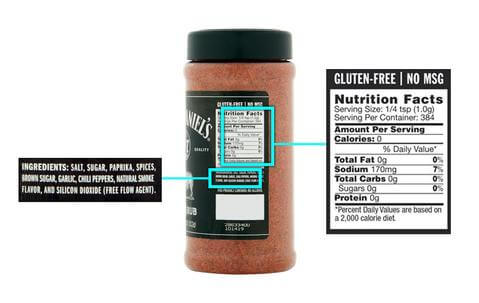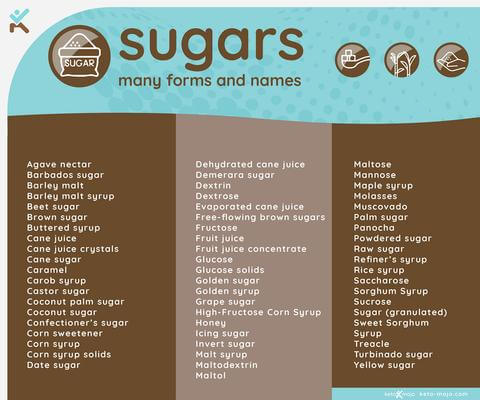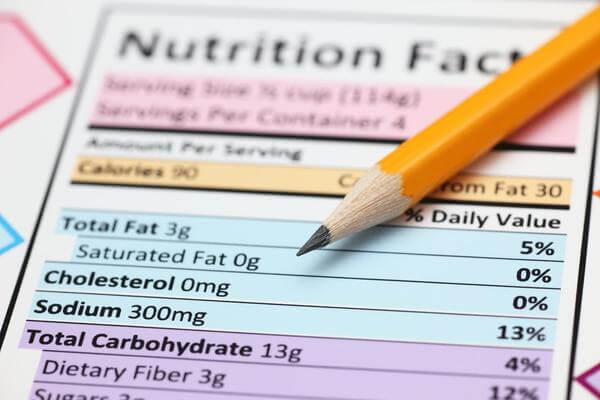So you’ve made the decision to start the ketogenic diet (or way of life, as so many of us like to call it)! But now you’re looking at a food label and wondering, what can I eat, and how do I know if it’s keto-approved? Figuring out whether a food is keto-friendly is one of the most common questions asked in the keto community on blogs, Facebook, and Instagram. We’re going to try and break it down into four easy steps.
Does It Fit Your Macros?
A keto diet is a high-fat, moderate-protein, low-carb diet. Whether you are tracking your specific macros, eating to the ketogenic macro percentages (65-80% fat, 15-30% protein, and 5-10% carbohydrates), or eating to your meter (testing ketone levels and adjusting consumption based on readings), in order to stay in ketosis (and achieve weight loss, if that’s your goal) you want to choose foods that are low in carbohydrates, high in fats, and moderate in protein.
So, when you look at a nutritional label, the first thing to ask yourself is, “Does this fit into my macros?” If the answer is yes, go to the next question.
Second, look at the percentage of each of your macros this food item will take up. If you are considering a breakfast option that has 15 grams of net carbs and you are allotted 20 grams of net carbs a day, this would not be a good option because it would use up three-quarters of your carb count for the day. To be safe, go with the one-third rule: Never eat more than one-third of your daily carbs in one sitting. Also, be sure to subtract the grams of dietary fiber from the total carbs to get the net carbs of the food item in question. Learn about the difference between total carbs and net carbs.
What Is The Serving Size?

After looking at the nutrition facts label and determining that the food/product fits within your allotted macros, it’s time to look at how much of that product you get for those specified calories/carbs/proteins/fats. This is where things start getting sneaky! If the serving size has under 0.5 gram of carbohydrates or other macronutrients the company can report it as zero (Office of Regulatory Affairs, 2014). For example: the BBQ Rub pictured above states it has 0 grams of carbs. That means it’s one of the safe keto foods, right? Well, the second ingredient is sugar, so no. This is a perfect example of the company using a small serving size to manipulate the nutrition facts label. A serving size of ¼ teaspoon has less than 0.5 grams of carbohydrates and thus can be reported as 0 grams of carbohydrates. Someone that didn’t look at both ingredients and serving size would think they could season their chicken breast to grill with and be perfectly fine. But who only uses ¼ teaspoon of seasoning on a chicken breast? Heck, who can even season a chicken thigh with that little (not us… seasoning = flavor)! Be mindful that sweeteners, including some sugar-free sugar alcohols, can affect your carbs bottom line.
What Are The Ingredients?
On a ketogenic diet, you want to check the ingredients on food labels as well as looking at the nutrition label facts. This is because the nutrition facts labels are often “manipulated” to make the food appear healthier. For example, by creating a small serving size you can give the appearance of the food being low in calories and carbohydrates.
Ideally, you will be choosing whole foods with no added ingredients, but this isn’t a perfect world. People get busy, have budgets, and who doesn’t want to try new recipes and keto baking? So, you want to examine the ingredients and look for obvious no-no’s: flour, starch, syrups, oats/grains, and sugar. Unfortunately, sugar isn’t just spelled S-U-G-A-R. (Though the sugar-alcohol erythritol is acceptable, provided you don’t have adverse reactions to it.)
Is There Sugar In This? Are There Hidden Sugars:
When we say, “Is there sugar?” we are talking about both the “natural” sugar and the added type. One of the reasons you cannot eat watermelon on the ketogenic diet is because of the high amount of natural sugars in the fruit; this translates into carbohydrates, which will raise your blood sugar and lower your ketone levels.
Sugar comes in many forms and has many names:

In a perfect world, what you are eating would not have ANYTHING from this list in it. There are times when it will be okay in moderation. Did you hear that? Some will choose to eat “Clean” (fresh foods, like meats, veggies, eggs, and dairy) and they are very strict and will consume NO sugars at all. And that is fine – more power to you! But many do choose to consume small amounts of sugar occasionally. So let’s explain what that means.
When looking at a food label, where does the aforementioned “sugar” come into play? Is it one of the first 3 ingredients? If so, that’s generally an automatic no. Ingredients are listed in order of weight. When looking at the ingredients list and seeing sugar as the first or second ingredient, it is almost 100% of the time going to mean you cannot have the item If sugar is the third ingredient, then it can go either way. Ideally, you would want to choose a better option, but sometimes budget and availability makes this more difficult. If it’s a large serving size or will be used to make a large serving size, this could be ok on occasion; it probably doesn’t have many grams of sugar. If you plan ahead, you can usually find a substitute online or a recipe to make your own!
Then there are foods such as bacon that are cured with sugar and it’s the third ingredient. This is where we refer to serving size and macros. If the serving size is very small, it’s a no. Some may say, “Small is relative” and that’s true. But we don’t think anyone is going to be happy and satisfied with ¼ slice of bacon (Who isn’t disappointed when we find out we can’t have the whole package?) So, if the serving size is 1 slice of bacon at 0 grams of carbs, we would say that is fine even though sugar is listed as the third ingredient. While this may not be for everyone, this is where testing your ketones and blood glucose levels comes into play. Anytime you are unsure or trying a new product or recipes, take a pre and post ketone and glucose level to see how the food affects you personally. What is right for one individual may not be right for another.
In conclusion, like many things in life, it’s not always black and white or yes and no. You need to look at the whole picture and most importantly YOUR whole picture.


